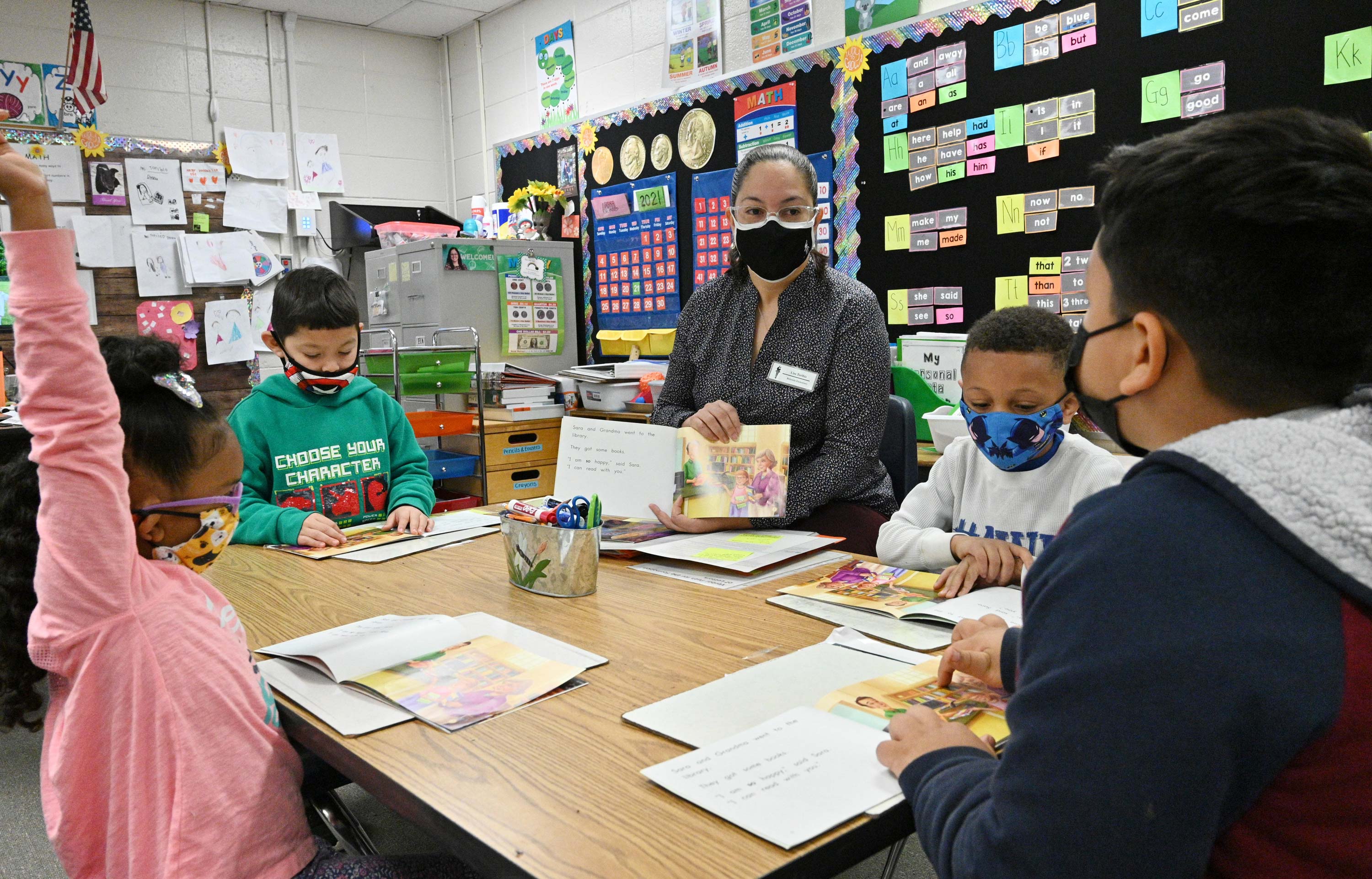California will lift capacity and distancing requirements on June 15

Covid-19 case numbers in elementary schools appear to be 37% lower when teachers and staff are required to wear masks, and 39% when air ventilation is improved, according to new research published by the US Centers for Disease Control and Prevention.
The findings are based on data from before coronavirus vaccines became available, but until children younger than 12 are eligible for the vaccine, “universal and correct mask use is a critical prevention strategy CDC recommends that schools prioritize regardless of vaccination status for in-person learning,” according to the study published on Friday.
Despite vaccinations beginning for children ages 12 to 15 and CDC’s changing mask guidance for fully vaccinated people, the agency has said schools should continue masking and using other coronavirus prevention strategies for at least the rest of the 2020-2021 school year. Given that masking reduces transmission and is easy to implement, it’s “an important COVID-19 prevention strategy in schools,” the study says.
“This study highlighted the importance of masking and ventilation for preventing SARS-CoV-2 transmission in elementary schools and revealed important opportunities for increasing their use among schools,” wrote the researchers from the CDC and Georgia Department of Public Health. SARS-CoV-2 is the name of the coronavirus that causes Covid-19.
The new research included data from 169 K-through-5 schools in Georgia. The schools opened for in-person classes last fall. At that time, the Georgia Department of Health required all schools to submit weekly data on the number of Covid-19 cases among students and staff.
The researchers examined those case numbers during November 16 through December 11. They also assessed responses from an online survey that was emailed to the school superintendents, asking about the Covid-19 prevention strategies implemented within the schools at the time — including mask-wearing and air ventilation.
The researchers found that, while the incidence of Covid-19 was lower in schools that required masks, it varied depending on whether the staff or the students were required to wear masks. Schools with mask requirements for teachers and staff had a 37% lower incidence, the researchers found. Schools with mask requirements for students had a 21% lower incidence.
“The 21% lower incidence in schools that required mask use among students was not statistically significant compared with schools where mask use was optional,” the researchers wrote. “This finding might be attributed to higher effectiveness of masks among adults, who are at higher risk for SARS-CoV-2 infection but might also result from differences in mask-wearing behavior among students in schools with optional requirements.”
When it came to air ventilation, the researchers found that there was a 35% lower incidence of Covid-19 when only windows and doors were left open or fans were used. But the data showed when those ventilation measures were used in combination with high-efficiency particle absorbing or HEPA filters, or other filter methods, there was a 48% lower incidence.
“In rooms that are difficult to ventilate or have an increased likelihood of being occupied by persons with COVID-19 (e.g., nurse’s office), installation of HEPA filters or UVGI should be considered,” the researchers wrote. They added that only about one half — or 51.5% — of school representatives reported in the online survey that they were “sure” that ventilation was improved in their schools’ classrooms.
While 18% “reported that their school implemented dilution methods in combination with filtration,” the researchers wrote. “These findings suggest that there are opportunities for many schools to reduce SARS-CoV-2 transmission through improved ventilation.”
More research is needed to determine whether similar findings may emerge in other parts of the United States and in data that are not self-reported or based on online surveys.
![]()


